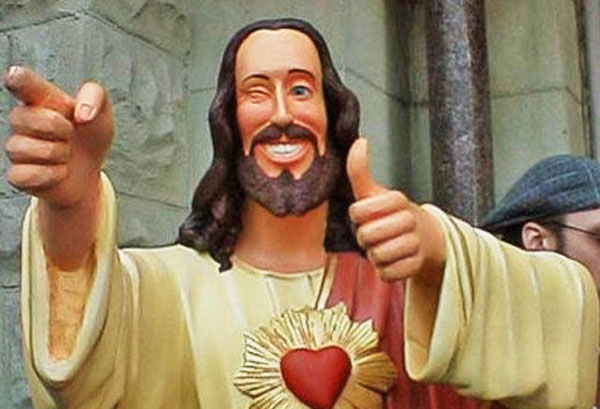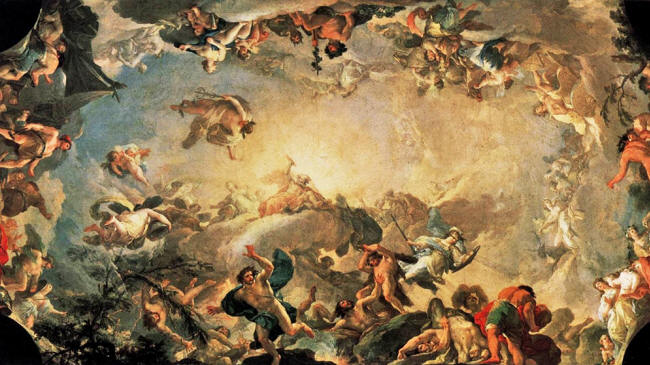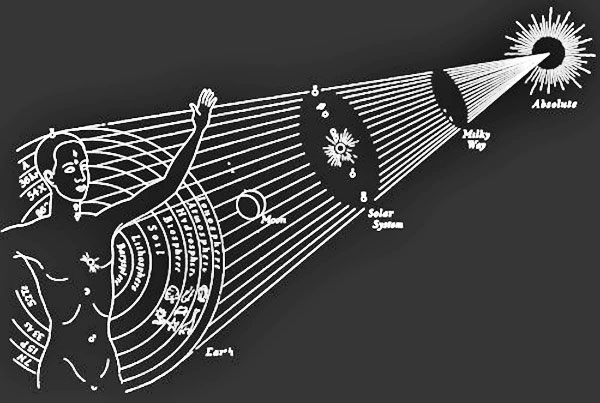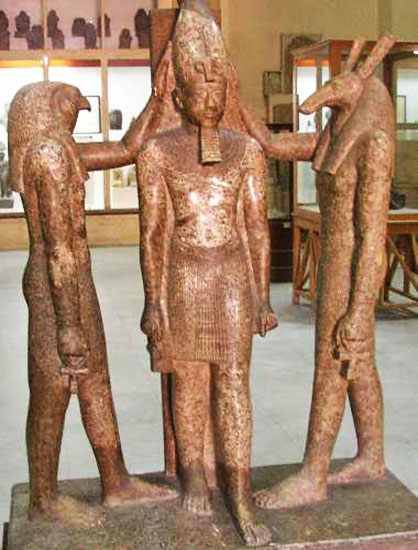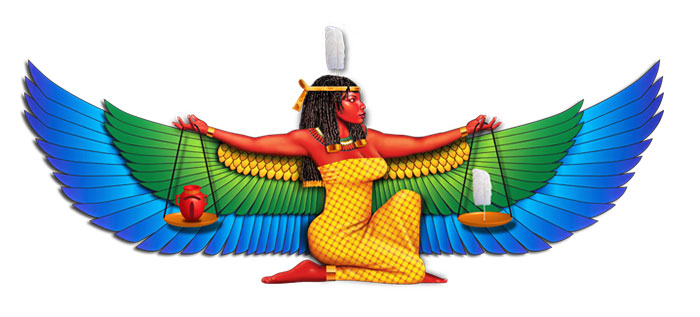|
Setting aside religion's
literal depictions of creation and conduct on this earthly plane,
one can learn to appreciate the core lessons and values embedded in
each belief system without needing a devout subscription to many of
religion's divisive ideologies.
The immediate focus at
the beginning of this article will be the ancient traditions, as much
of their wisdom serves as the foundation of the modern religions
that influence our culture.
The applicable wisdom
that lies underneath the dogma of modern theologies may provide
clarity and guidance toward your journey of ascension.
...used to
depict an understanding of how reality works in relation to the
ethereal which is our microcosm deep and within, our grounded
reality, which is our immediate environment, and the divine, which
is the macrocosm far and beyond - all of which harmoniously work in
accordance with each other.
The problem that spurred from this was that people demanded, coerced, and enforced that their word is the Truth.
This right brain perspective can run wild, as those who subscribe to the strict ideologies of their faith take every word and depiction of their sacred understandings literally, with no room for practical analysis.
This leads to division among people as well as unquestioned obedience to theologies that are tainted with man's manipulation to control the will of the people.
"We live in a world of numerous ideologies and belief systems, all competing for the same real estate, your mind." David Snyder
Separate yourself from the superficial and dive deep into the esoteric meanings behind these stories and figureheads, as seeing past those illusions will enable you to reveal a common understanding of divinity and knowledge of self.
Instead of getting lost
in those details, it is more important to understand the core
applicable messages of his teachings as well as the other prophetic
leaders, and stories told in religious traditions that share a core
commonality with many other belief systems.
So in an attempt to break
down the formality of these religions, I'm going to present the core
knowledge that leads to a higher understanding of self and
environment, as it will translate to better ways of governing
oneself from within and navigating one's journey without.
A religion is a fixed point of view of understanding divinity, while holding back perspectives and levels of understanding the fall outside of the established religion.
All religions share a core truth that the exoteric elements are holding back and because of this, the grounded esoteric alternatives of many modern religions are more interconnected with the commonalities of all cultures.
Religion is a box for
consciousness because you're not seeing the whole picture.
The divine Will was to maintain balance and order so that everything that works within the system of creation continued to function.
This form of order was not coercive authoritarian driven, it was an order that lent itself to responsibly maintaining the harmony and balance through systems and cycles that prevented chaos.
Likewise hell on earth
can exist within and without if proper balance and order are not
maintained, as well as failing to resolve one's karmic challenges in
the present.
To this day, very high levels of the Catholic church own some of the most expensive and powerful telescopes in the world, yet to the masses below those power structures of Catholicism, studying the night sky or even dabbling in one's Horoscope is forbidden, as it is considered to be blasphemous...
The study of the planets,
stars, sun, and moon, as well as their relation to the cycles that
repeat, such as their orbits and sequential seasons, intervolving
solstices and equinoxes, are incorporated into the esoteric laws of
analogy.
In light of astronomy and
horoscopes, the word horoscope, which pertains to one's life path in
relation to the cycles around the sun, is derived from the name
Horus, an ancient Egyptian sun God and later adapted into Greek
language as Horos.
In many cultures the sun was their first astrological body, or higher power to be depicted as a deity. It was bright and luminous, it allowed one to see, and it gave life. One could feel the sun's warmth and was starkly aware of its power to incinerate.
It is tangible enough to be seen and felt, yet it was impossibly out of reach, as its presence and power were above those who marveled at it, making one an insignificant spec in comparison to it.
Association with the Sun
has laid the basic premise for the duality of many belief systems
that integrate the polarities of light and darkness, a concept that
will repeat itself much throughout this series as we explore other
belief systems and ideologies.
He makes his trek across the sky daily across the horizon. The word Horizon means "the zone of Horus." Hori is the generative word for Horus, Zon refers to the zone of Horus, thus it is the horizon of Horus, which is where Horus appears on the horizon.
It is his arc, his flight
path across the sky.
The zenith is the highest
point in its arc across the sky. The highest point of Horus's flight
path, at 12 noon, is called Amen-Ra.
His mother Isis is the moon Goddess of the night sky. At night she is the queen of the heavens who rules the night sky, while her husband Osiris is the creator God and ruler of the heavens.
In
ancient Egyptian mythology, Isis gives birth to the rising sun each
day, which is the solar God Horus, who is given divine right by
Osiris to rule and give light to the earth during his horizon.
(In other Egyptian stories Set is also depicted as his uncle, but either role has little consequence over the major role he plays as the dark pillar of duality.)
Horus and Set were originally expressions of innate duality, the two
aspects of creation playing a role throughout the cycles of the
day-sky and night-sky.
Eventually Horus and Set reconciled and negotiated their conduct so that one wasn't selfishly looking out for himself or having to defend against the other's transgression.
A trusting relationship was formed in which both sides began to understand the importance of their complimentary existence.
Without this balance of opposites, Horus would not be able to uphold the balance of Ma'at. This balance gave Horus the ability to fight chaos, which was represented as well by the God Apep, who was even more of a personification of evil left unchecked prior to Horus becoming Ra.
Set manifested chaos within, while Apep manifested chaos in the external environment.
Since Horus, who was the light, represented the peace while being the God of war who instills Ma'at's order over the chaos, one could speculate that the tactics of combat were consulted with Set since he had lived much of his life in affliction.
It was during this time
of balance with Set that Horus was able to reach his highest point,
becoming Ra to fight Apep and instill the will of Ma'at on earth as
it is in heaven.
Ma'at is the Goddess or conception of truth, balance, order, harmony, law, morality, and justice. She carried out order in the heavens and on earth by regulating the stars, seasons, and regulating moral action of Gods and Pharaohs.
Carrying out the karmic order and natural laws of the heavens was done on the earthly plane by fighting the external physical chaos of those who had abandoned truth, justice, and equality.
Just as people who deal with the devil become ego-absorbed demon archetypes, people who were imbalanced in the ways of Set became Apeps. Foreign invaders who threatened the balance were also considered Apeps.
Other forms of chaos beyond human acts on the earth plane were also considered to be influenced by the spirit of Apep. The union of Horus and Set is a lesson to Egypt's citizens to reconcile the internal chaos within by accepting the parts of themselves that need the light's guidance.
As long as there was chaos within, the threat of chaos (Apep) existing in the external environment was imminent.
Apep's external chaos threatened
to provoke the actions of Set within, making it more difficult to
restore order and balance throughout the land and the people.
Pharaohs are frequently depicted with the emblems of Ma'at to emphasize their role of upholding divine order.
Through the ruling of the Pharaoh,
Egyptian citizens were expected to follow this legitimate form of
order that is aligned with the principles of moral action, growth,
and sustainability.
A Pharaoh self absorbed in ego could bring about disaster and chaos.
In addition, the actions and judgments of the Pharaoh were meant to guide the citizens through the ambiguous moments of reality, simplifying the principles of Ma'at so that choices of the citizens are made with the highest integrity and care.
Obeying the
order was not servitude to selfish authority figures, it was doing
your part to integrate into the wholeness of an ordered, balanced,
natural divinity, which is why authority and compassion were
integrated into the foundation of ancient Egyptians.
The heart
could only be rewarded for its devotion to Ma'at if it embodied the
light, not only in its weightlessness but also in its luminosity to
see the truth of proper action.
They are
moral, orderly, and divine symbolic analogies, an expression of
consciousness, not to be taken as physical Gods.
The dark elements help us understand our fears and desires, and with this understanding we cycle back into the light of wisdom.
They are Gods within us that influence our actions.
To try and extinguish the darkness would only cause Set to resist with war.
Negotiation was the only way because complete annihilation of the darker elements within was beyond our mortal capabilities.
On all levels of reality, this balancing cycle of order and harmony must be upheld to maintain the structure above and below.
If the balance of Ma'at was not maintained, the ignorance of order would manifest as Isfet, which is chaos in the heavens, chaos in Apep who will disrupt the earthly realm, and chaos within Set, who will affect the Pharaohs and citizens from within.
Isfet is more of an abstract concept with no known God attached to it to give its understanding a more relatable nature. It is seen more as the absence of structure and balance, which means that there is more responsibility on the part of Ma'at to maintain structure, rather than to blame external circumstances.
It was pretty much all on Ma'at to balance the heavens.
As long as he was balanced with Horus, Isfet would not destroy their temple.
The destructive force of Set was still useful when fighting an enemy of Ma'at. In the heavens, on the other hand, Ma'at was threatened by the absence of responsibility if she did not maintain order, not by an opposing deity who continually aspired to disrupt her.
Lack of order in the heavens would cause a
lack of order on the earth plane, causing irritability within Apep
and Set.
In religion, dualism means the belief
in two supreme opposed powers - Gods or sets of divine or demonic
beings - that influence the world, which has had an important
presence in the history of thought and religion.
Moral dualism is the belief of the great complement or conflict between the benevolent and the malevolent. It simply implies that there are two moral opposites at work.
Some of these dualities imply harmony in which
one balances the other, such as yin and yang, while other forms of
duality imply rivalry and opposition, such as good and evil.
It is important to have a foundational understanding and acceptance of the duality that exists within and outside of man in order to grasp the more detailed concepts of future teachings.
In this case we talked about light and darkness as it relates to Horus and Set, brothers of the same father, one representing good, the other representing bad.
It is only when we balance these two that we can become stable from within.
This is not to say that darkness can have equal control over us. To balance the dark is to bring it into the light of consciousness so that it no longer controls you.
The sight and understanding of that darkness will reduce its influence that threatens Ma'at's inner and environmental stability.
As we build our
temple from within we must be aware of Horus and Set on either sides
of our temple...
|


